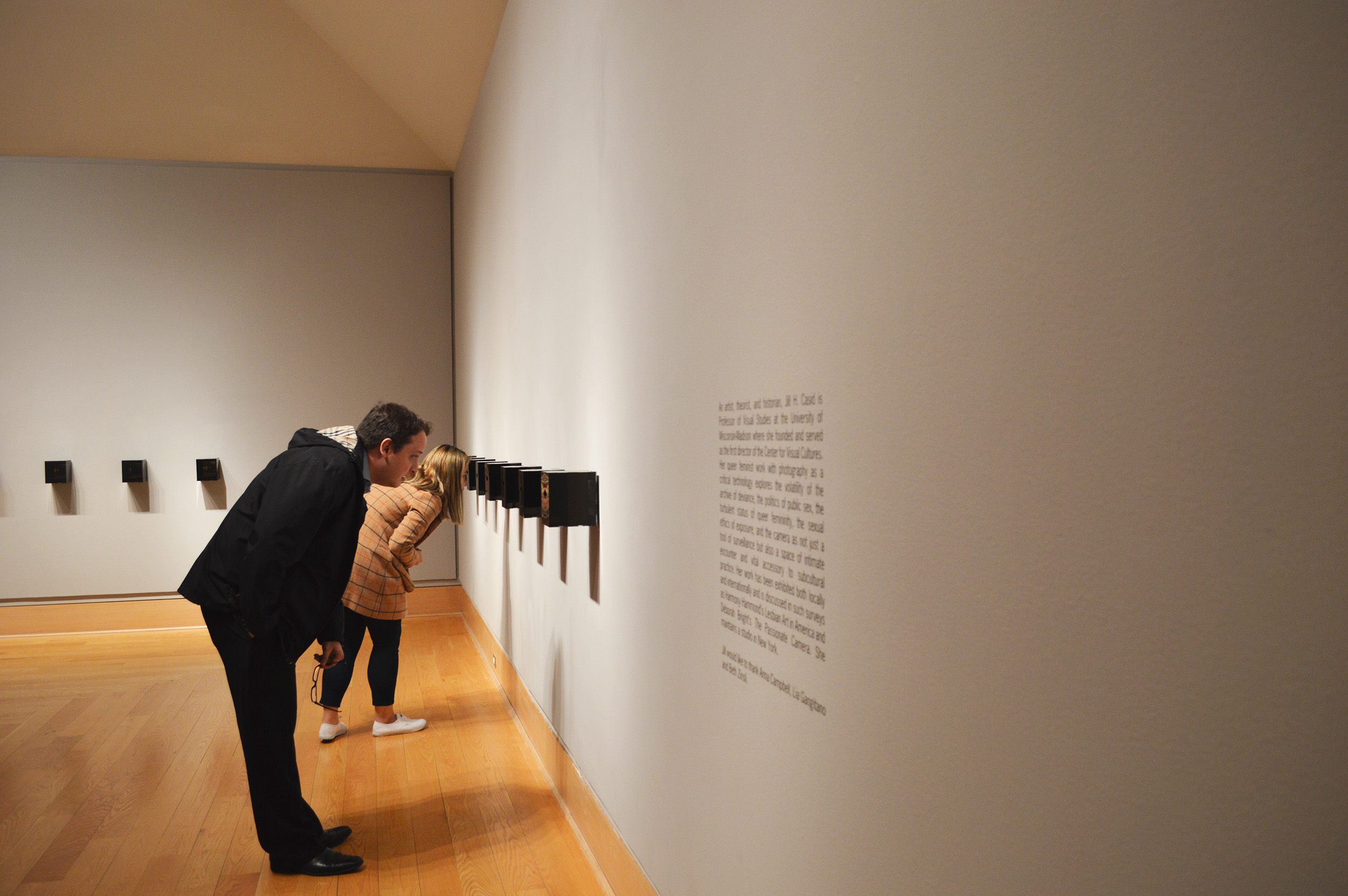Generally when you go into the Wriston Art Center Galleries, you have an idea of what you are going to get, by and large. Some visual art here, a splash of photography there, the area dotted tastefully with a few sculptures and one or two video projectors. It is good to have variety, and it is always nice to have a diverse collection of art displayed in Wriston, and you never know what sort of surprises you might discover.
Every once in a while, though, Wriston does a theme exhibition in subject or medium or both, and this norm was well demonstrated with the opening of three new exhibitions that started Thursday, March 31. They are “Certificates of Presence, the Photography of Livija Patikne,” “The Archive as a River: Paul Vanderbilt and Photography” and an exhibition by University of Wisconsin-Madison artist Jill H. Casid. All three exhibits deal with the same ideas: the preservation of the past; the way that the distance of time can cause memory to become slippery and evasive; and how conjured-up memories can become so different from what happened long ago.
Patikne’s approach is possibly the most emblematic of these themes: her compositions are very much like portraits, aware of the fashion and aesthetics of the time, reminiscent of the legendary cinematographer Gordon Willis’ collaborations with Woody Allen in “Zelig, The Purple Rose of Cairo”—deeply aware and in tune with color and detail that would be forgotten by those less careful. These photos could exist either as real portraits of the past or highly elaborate reconstructions, and it is a delightful surprise to find out which one the portrait really is.
Vanderbilt’s approach is very different: his photos are almost elusive, as if taken from the backs of moving cars or walking by with a cellphone camera without breaking stride. The pictures don’t look blurry or rushed but still feel almost slippery, as if they are hurtling by like a comet. This feeling is also emphasized by the fact that Vanderbilt includes his own poetry on the walls, grouping certain images together under a common theme—a few lines that evoke the memory the pictures depict. What a pity there was not audio of the poetry—it would greatly enhance the already quite compelling effect.
It is Casid, however, who occupies the largest space of the gallery, and for good reason: her works are the most evocative of the themes, the longest reaching in terms of subject and geography and the most interesting in form. A series of what could almost be Polaroids of various LGBT couples showing affection line the wall, pointed at a level where the witness to the art must crouch or bend to see them. These photos are also covered with semi-translucent black boxes, which make the context blurry and indistinct unless you look through a small slot in the opening of the box. This effect, while very private and almost voyeuristic at first, soon becomes emotionally powerful: we realize that this is a memory—a moment in time that shines out from a personal perspective against the darkness.


